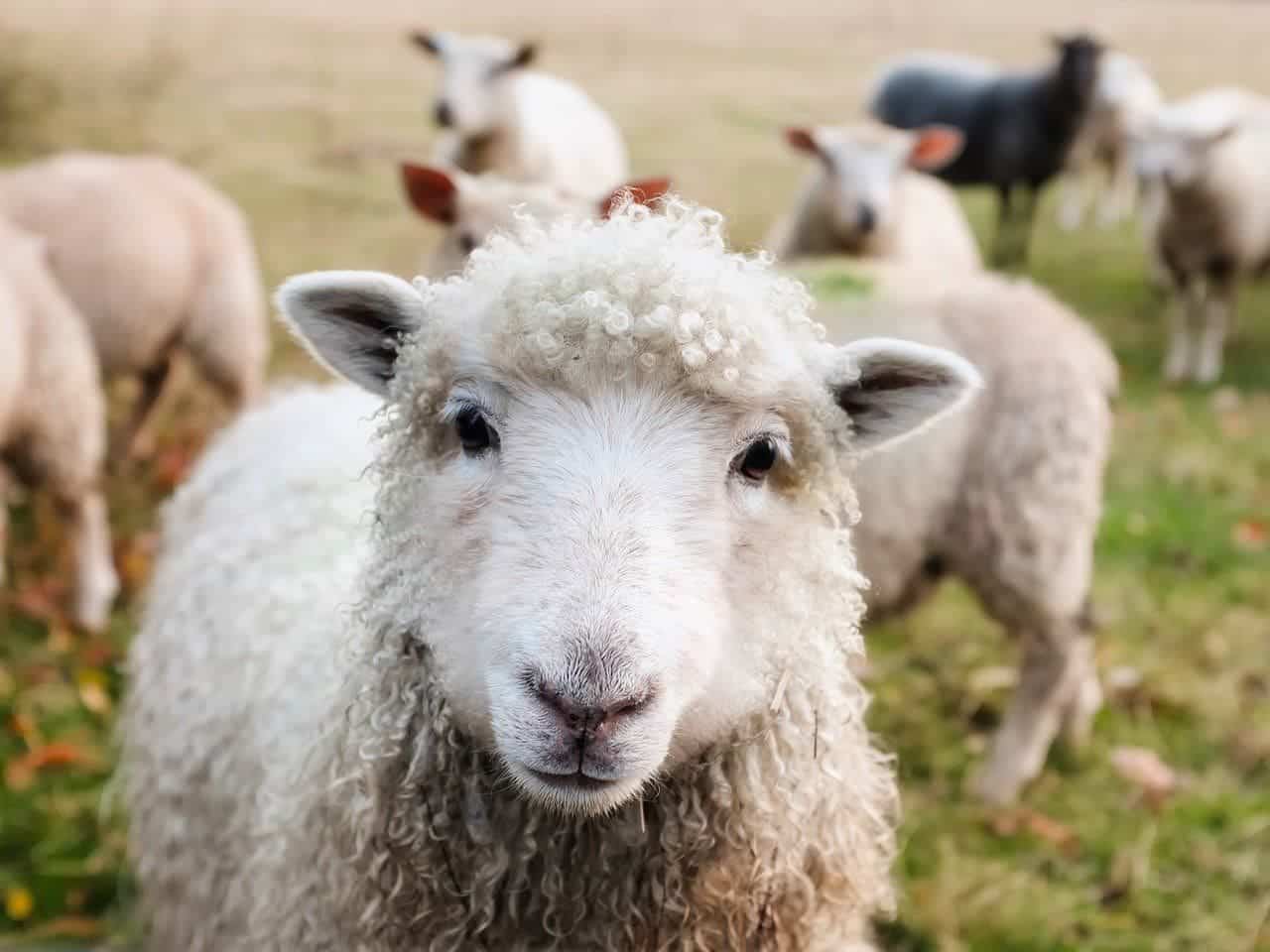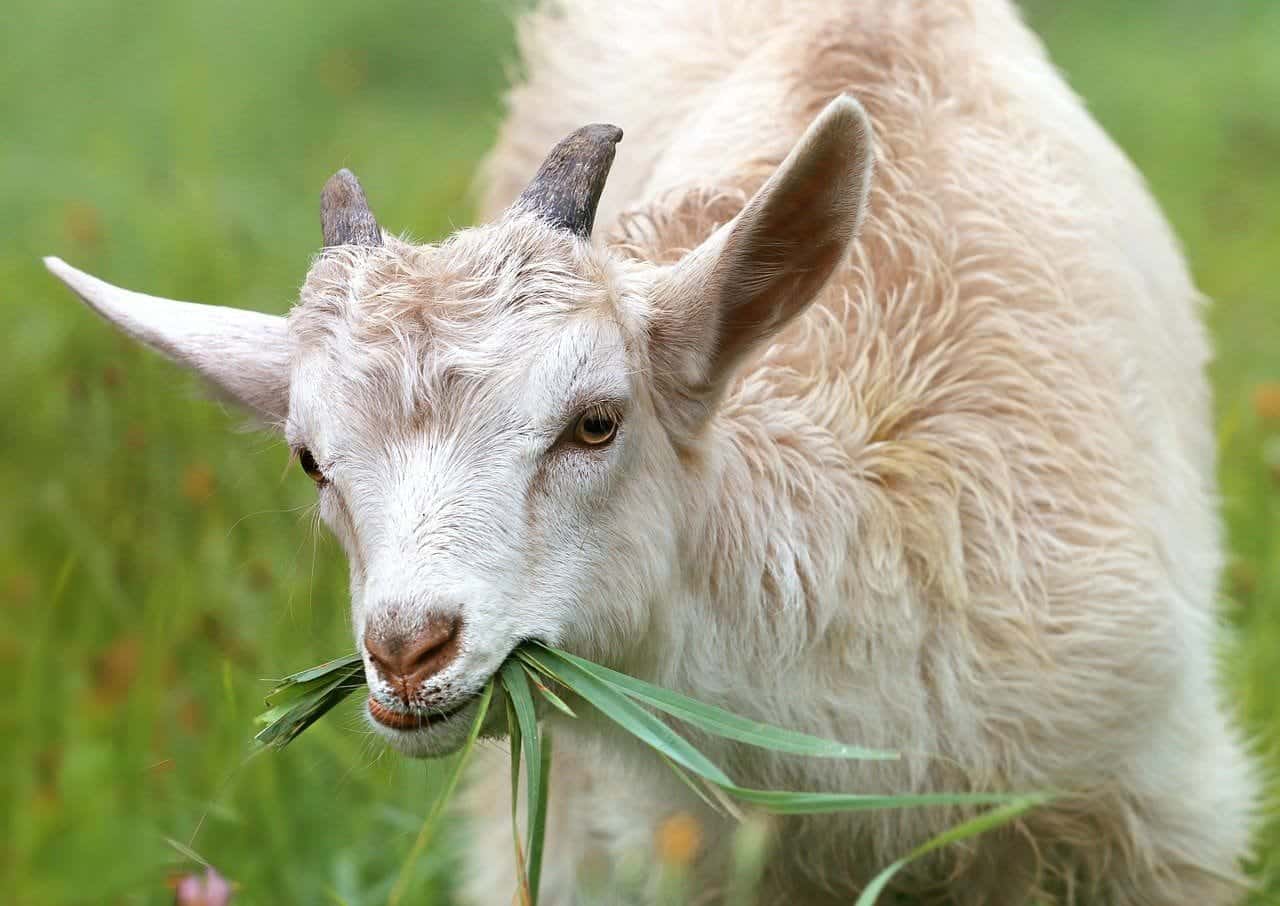Both sheep and goats are common livestock animals raised for their pelts, wool, meat, and milk. Since these two animals were among the first ever domesticated by man, they’ve been our close companions for thousands of years. They are still some of the most popular livestock animals due to their wide range of use, ease of care, and calm personalities.
For the uninitiated, sheep and goats may seem similar on the surface and difficult to tell apart. After all, there are shaggy, wooly goats and shaven, short-haired sheep, confusing the matter even more! Once you know what to look for, the two are actually quite different not only in appearance but also in typical behavior. Both have different needs and various uses, so it’s important to consider those needs and the environment in which you’ll be raising them.
In this article, we take a look at the main differences between sheep and goats and find out what makes each animal so unique. Let’s get started!

Visual Differences

The quickest way to visually tell the difference between a sheep and a goat is their tail: A goat’s tail typically points up, whereas a sheep’s tail hangs down. Another obvious difference is a sheep’s woolly coat that requires annual shearing. While there are long-haired goats, most have short, coarse coats, often with varying sizes of beards, which sheep do not have. Lastly, the great majority of goats have varying sized horns, but very few sheep have any, and if they do, they are thick and curl around the sides of their heads. A goat’s horns are typically thin and straight.
At a Glance
- Average height (adult): 40-50 inches
- Average weight (adult): 80-400 pounds
- Lifespan: 10-12 years
- Exercise needs: Moderate, about 1-2 hours a day
- Grooming needs: High
- Family-friendly: Yes
- Other pet-friendly: Mostly
- Trainability: Friendly and docile, although rams can be stubborn
- Average height (adult): 25-35 inches
- Average weight (adult): 45-300 pounds
- Lifespan: 15-18 years
- Exercise needs: High, 2+ hours a day
- Grooming needs: Low
- Family-friendly: Mostly
- Other pet-friendly: Often
- Trainability: Intelligent and usually easy to train

Sheep Overview

Personality / Character
Sheep are natural flock animals that rarely can be found on their own. They feel safe in small groups and quickly become agitated when separated from their flock, making sheep easier to handle and keep together in one place than goats. Sheep are shy (sheepish?) and easily spooked and tend to run away with even the slightest hint of danger. This, of course, makes them difficult to tame and train. However, if handled from a very young age, they are less fearful of humans and happy to be handled. If you are keeping sheep for their wool, it’s especially important to make sure they are amenable to being handled from a young age; otherwise, shearing them can become a massive task.
Health & Care
Sheep tend to handle cold weather better than goats and do not get diseases easily. Of course, this also makes them rather sensitive to hot and humid temperatures. This makes shearing them at the right time vital to prevent overheating. Both sheep and goats are susceptible to parasitic issues like mites and ticks, but treating these is made all the more difficult in sheep due to their wooly coats.
Sheep commonly suffer from footrot, a bacterial infection affecting their hooves. Sheep do not like getting their hooves wet, and this may be their natural instincts at play. Sheep with poor nutrition or genetics and older sheep are far more susceptible to this disease, as are sheep that are constantly grazing on wet, marshy land.

Breeding
Sheep ewes come into heat every 16-17 days and breed almost all year round. They have a gestation period of 5 months, meaning it is possible, though uncommon, for them to lamb more than once a year. In more tropical climates, they may have a birth cycle of 8-month intervals due to fewer seasonal changes.
Suitability
Sheep are only really a suitable choice of livestock if you have plenty of free land for them to graze on. Also, they need to live in small flocks and require more space than goats. Goats are foragers more than grazers and can live on a variety of different terrains, but sheep need lush grass to graze on and plenty of space to roam. If you live on a large farm with plenty of free grassland, sheep are a great choice.
- Highly resistant to cold
- Multiple uses
- Docile and friendly
- Not hugely susceptible to disease
- Need tons of space
- Must live in flocks
- High maintenance

Goat Overview

Personality / Character
Goats are independent creatures that are happy to wander around foraging all on their own. Of course, this habit also makes them far more curious, brazen, and mischievous than sheep, and they can cause havoc in your garden if left unchecked. Goats are also incredibly agile, far more so than sheep, and they can climb up to areas that one would never think possible. They are expert escape artists too. This makes them a difficult yet highly entertaining animal to keep on a small homestead. While they can be used for their meat and milk, they make great pets too.
Health & Care
With plenty of space to forage and exercise, access to clean water, and the best quality supplementary feeding that you can manage, goats are healthy, hardy animals that can easily live for 18 years and beyond. Other than parasitic issues like mites and ticks, goats suffer from few health issues if they are well looked after. They are prone to a bacterial infection in their hooves, known as foot scald, which can be expensive to treat but is preventable and easily treated if caught early.

Breeding
Goats are fairly prolific breeders, and females can be bred at around 8 months old. Their gestation period is typically 150 days (5 months), and their estrous cycle occurs every 21 days on average. Females can have multiple births, twins, triplets, or even more, but one or two kids at a time is typical. Meat goats are usually bred every 8 months, and it requires special skill, experience, and careful timing.
Suitability
If you live on a small homestead without the tons of grazing space that is required for sheep, goats are a great choice. While they can be mischievous at times and difficult to keep fenced off, they are far hardier, longer-lived, and easier to care for than sheep, especially for beginner livestock keepers.

Which One Is Right for You?
Both sheep and goats have many uses and advantages for a small homestead. Both are fairly easy to look after, can produce great quality meat, and are calm in temperament and easy for a novice to handle. This is why both animals have been such popular livestock companions for humans for thousands of years.
The advantage of keeping goats, especially dual-purpose breeds, is that you’ll be getting high-quality meat and great-tasting milk from a hardy, easy-maintenance animal. Goats are also friendly in general, and some breeds are so easygoing that they are often kept as pets. They also have the advantage of being able to forage on a wide variety of foods and are great for clearing weeds and unwanted plants. The downside is that they can be mischievous and difficult to contain, and if they get into an area where you don’t want them, like your flower beds or veggie garden, the results can be devastating.
Sheep have the advantage of providing high-quality meat in a fairly low-maintenance animal and the added advantage of wool. Sheep have simple nutritional needs, and all they really require is a field of quality grass to graze on. They need a ton of grazing space, however, and need to live in small flocks, making them impossible to keep if you have limited space. Also, while they can be friendly, they are far more difficult to tame than goats and prefer the company of other sheep to humans!
You may also want to read:
- Do Goats Make Good Pets? What You Need to Know!
- Do Sheep Make Good Pets? What You Need to Know!
- Why Do Sheep & Goats Wear Bells? Is It Annoying for Them?
Featured Image Credit: Top – Luke Stackpoole, Unsplash | Bottom – Nandhu Kumar, Pexels
